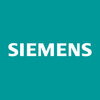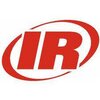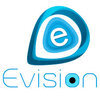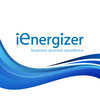Senior Executive - Finance
30+ Senior Executive - Finance Interview Questions and Answers

Asked in Thermax Limited

Q. What are provisions, contingent liabilities, and contingent assets, and can you provide examples of each?
Provisions, contingent liabilities, and contingent assets are financial terms related to potential future events.
Provisions are liabilities of uncertain timing or amount, such as warranty provisions or restructuring provisions.
Contingent liabilities are potential liabilities that may arise depending on the outcome of a future event, such as pending lawsuits or guarantees on loans.
Contingent assets are potential assets that may arise depending on the outcome of a future event,...read more

Asked in Thermax Limited

Q. What is the definition of Property, Plant, and Equipment (PPE), how is the cost capitalized, and what does site restoration treatment entail?
PPE refers to tangible assets used in production, cost is capitalized by including purchase price, installation costs, and necessary modifications, site restoration treatment involves returning a property to its original state.
Property, Plant, and Equipment (PPE) are tangible assets used in production, such as buildings, machinery, and vehicles.
The cost of PPE is capitalized by including the purchase price, installation costs, and any necessary modifications to make the asset...read more
Senior Executive - Finance Interview Questions and Answers for Freshers

Asked in Thermax Limited

Q. What are the differences between deferred revenue, unearned revenue, and unbilled revenue?
Deferred revenue is revenue received in advance but not yet earned, unearned revenue is revenue received in advance and earned but not yet recognized, and unbilled revenue is revenue recognized but not yet billed.
Deferred revenue is revenue received in advance but not yet earned, so it is recorded as a liability until it is earned.
Unearned revenue is revenue received in advance and earned but not yet recognized, so it is recorded as a liability until it is recognized as reven...read more

Asked in ITC

Q. What is India GDP ? Wha is cost of equity ? What is intrinsic value of shares
India GDP is the total value of goods and services produced in India. Cost of equity is the return required by investors. Intrinsic value of shares is the true value of a company's stock.
India GDP was $2.9 trillion in 2019
Cost of equity is the return expected by investors for the risk they are taking
Intrinsic value of shares is calculated using various methods such as discounted cash flow analysis and price-to-earnings ratio
Intrinsic value represents the true value of a compa...read more

Asked in General Mills

Q. Do you possess a fundamental understanding of freight?
Yes, I possess a fundamental understanding of freight.
I have experience in managing transportation costs and logistics for a company.
I understand the impact of freight costs on the overall financial performance of a business.
I am familiar with different modes of transportation such as air, sea, and land freight.
I have worked on optimizing freight routes to reduce costs and improve efficiency.
I am knowledgeable about freight regulations and compliance requirements.
I have negot...read more

Asked in Thermax Limited

Q. What is Ind AS 115 and how does it apply to financial reporting? Explain 5 step?
Ind AS 115 is a new revenue recognition standard that impacts how revenue is recognized in financial statements.
Ind AS 115 is based on the core principle that revenue should be recognized to depict the transfer of promised goods or services to customers in an amount that reflects the consideration to which the entity expects to be entitled.
The standard outlines a 5-step model for recognizing revenue: identify the contract with the customer, identify the performance obligation...read more
Senior Executive - Finance Jobs




Asked in Thermax Limited

Q. What is the treatment of leases under Ind AS 116?
Under Ind AS 116, leases are recognized as right-of-use assets and lease liabilities on the balance sheet.
Leases are classified as finance leases or operating leases based on specific criteria.
For finance leases, the lessee recognizes a right-of-use asset and a lease liability on the balance sheet.
For operating leases, the lessee recognizes a right-of-use asset and a corresponding liability on the balance sheet.
Lease payments are apportioned between interest expense on the le...read more

Asked in Alpha Plus Technologies

Q. Do you have experience with quotation and invoice creation?
Yes, I have experience in creating quotations and invoices.
I have experience in using accounting software to create professional invoices and quotations.
I am familiar with including all necessary details such as item descriptions, quantities, prices, and payment terms.
I have ensured accuracy and compliance with company policies and regulations in all my invoicing and quotation activities.
Share interview questions and help millions of jobseekers 🌟


Asked in Bajaj Finance

Q. My weakness is not being fluent in English. Do you think that is a problem?
I recognize that my English fluency is a challenge, but I'm actively working to improve it through practice and resources.
I have enrolled in an English language course to enhance my communication skills.
I practice speaking with colleagues and friends to build confidence.
I use language learning apps daily to expand my vocabulary and comprehension.
In my previous role, I successfully led a project team despite language barriers by focusing on clear visuals and written communicat...read more

Asked in Dentsu World Services

Q. What is the format for balance sheet reconciliations, and how do you perform them?
Balance sheet reconciliations involve comparing the balances in the general ledger to external sources to ensure accuracy.
Start by gathering all relevant financial statements and supporting documents
Compare the balances in the general ledger to external sources such as bank statements, invoices, and receipts
Identify and investigate any discrepancies or differences
Adjust the balances in the general ledger as needed to reconcile with external sources
Document the reconciliation ...read more

Asked in Excitel Broadband

Q. What are the different sections of TDS and their rates?
Different sections of TDS include salary, interest on securities, dividends, etc. Rates vary based on the type of payment.
Section 192: TDS on salary
Section 194A: TDS on interest other than interest on securities
Section 194B: TDS on winnings from lotteries, crossword puzzles, etc.
Section 194C: TDS on payment to contractors and sub-contractors
Section 194J: TDS on professional or technical services
Rates vary from 1% to 30% depending on the section and type of payment
For example,...read more
Asked in KGRS & Co.

Q. What is the difference between private equity and a joint venture?
Private equity and joint venture are both investment strategies, but differ in ownership structure and level of control.
Private equity involves investing in privately held companies, often with the goal of acquiring a controlling stake.
Joint venture is a partnership between two or more companies to pursue a specific business opportunity, sharing ownership, control, and profits.
Private equity investors typically seek higher returns through active management and operational imp...read more

Asked in MakeMyTrip

Q. What is GST and GST on commission?
GST stands for Goods and Services Tax, a tax levied on the supply of goods and services in India.
GST is a comprehensive indirect tax that has replaced many indirect taxes in India.
It is levied on the value-added to goods and services at each stage of the supply chain.
GST on commission refers to the tax levied on the commission earned by a person or entity for providing services.
The rate of GST on commission varies depending on the type of service provided.
For example, the GST...read more

Asked in Ingersoll Rand

Q. Previous company left reasons Working criteria Last company environment and culture
Left previous company due to lack of growth opportunities and seeking a more challenging role. Enjoyed collaborative working environment and supportive culture.
Left previous company due to lack of growth opportunities
Seeking a more challenging role
Enjoyed collaborative working environment
Appreciated supportive culture

Asked in Shyam Steel Industries

Q. How do you maintain GRIR and SRIR?
Maintaining GRIR & SRIR involves regular monitoring, reconciling accounts, and addressing discrepancies promptly.
Regularly monitor GRIR & SRIR accounts to identify discrepancies
Reconcile accounts on a regular basis to ensure accuracy
Address any discrepancies promptly to prevent further issues
Ensure proper documentation and communication with relevant stakeholders
Implement internal controls to prevent future discrepancies

Asked in BUDDI.AI

Q. Describe your experience with finance activities.
Dealing with finance activities requires experience in financial analysis, budgeting, forecasting, and risk management.
Financial analysis involves analyzing financial statements, identifying trends, and making recommendations for improvement.
Budgeting involves creating and managing budgets, monitoring expenses, and ensuring compliance with financial regulations.
Forecasting involves predicting future financial performance based on historical data and market trends.
Risk managem...read more

Asked in JMR Infotech

Q. Explain the procedure for GST filing.
GST filing is the process of submitting tax returns and related documents to the tax authorities.
Register for a GST identification number (GSTIN)
Maintain accurate records of all sales and purchases
Prepare monthly or quarterly GST returns
File the returns online through the GST portal
Pay any tax liability or claim refunds as applicable
Submit additional documents like invoices, credit notes, etc. if required
Ensure compliance with GST rules and regulations

Asked in Shyam Steel Industries

Q. How do you process MIRO and payment?
Processing miro and payment involves verifying invoices, recording transactions, and issuing payments.
Verify the accuracy of the invoice details
Record the transaction in the accounting system
Obtain necessary approvals for payment
Issue payment through the chosen payment method
Maintain proper documentation for audit purposes
Asked in KGRS & Co.

Q. Capm model and dcf model in equity valuation
CAPM and DCF models are used in equity valuation.
CAPM (Capital Asset Pricing Model) is used to determine the expected return on an investment based on its risk.
DCF (Discounted Cash Flow) model is used to estimate the intrinsic value of a stock by discounting its future cash flows.
CAPM considers the risk-free rate, market risk premium, and beta of the stock to calculate the expected return.
DCF model calculates the present value of future cash flows by discounting them using an...read more

Asked in Evision Technoserve

Q. What is your total work experience?
I have over 15 years of diverse finance experience across various industries, including strategic planning and financial management.
Over 15 years of experience in finance, including roles in corporate finance and investment analysis.
Led financial planning and analysis for a $500 million revenue company, improving forecasting accuracy by 20%.
Managed a team of 10 finance professionals, focusing on talent development and performance optimization.
Implemented cost-saving initiativ...read more
Asked in Project Engineering Services

Q. What is current ctc and expected ctc
Current CTC is INR 15 lakhs per annum and expected CTC is INR 20 lakhs per annum.
Current CTC: INR 15 lakhs per annum
Expected CTC: INR 20 lakhs per annum

Asked in Mettler-Toledo

Q. How do you perform bank reconciliation?
Bank reconciliation involves comparing the bank statement with the company's records to ensure accuracy.
Obtain the bank statement and company records
Compare the two to identify any discrepancies
Adjust the company records to match the bank statement
Prepare a reconciliation statement to document the process
Examples of discrepancies include outstanding checks, deposits in transit, and bank errors

Asked in Shyam Steel Industries

Q. How are assets capitalized?
Capitalized assets are long-term assets that are recorded on a company's balance sheet and are depreciated over time.
Capitalized assets are recorded as an asset on the balance sheet and are depreciated over their useful life.
These assets are expected to provide benefits to the company for more than one year.
Examples of capitalized assets include buildings, equipment, and vehicles.
Capitalizing an asset allows a company to spread the cost of the asset over its useful life, rath...read more

Asked in Apex Group

Q. What is private equity?
Private equity is a type of investment where funds are raised from investors to acquire ownership stakes in private companies.
Private equity involves investing in privately-held companies that are not publicly traded on stock exchanges.
Investors in private equity funds provide capital to the fund managers, who then use the funds to acquire ownership stakes in private companies.
Private equity firms typically aim to improve the financial performance of the acquired companies an...read more

Asked in Xiaomi

Q. Do you have knowledge about SAP?
Yes, I have knowledge about SAP
I have worked with SAP in my previous roles
I am familiar with SAP modules such as FI/CO, MM, and SD
I have experience in implementing SAP solutions and managing SAP projects
I am proficient in using SAP tools such as SAP BusinessObjects and SAP HANA
Asked in Kissandhan Agri Financial Services

Q. How would you write an email to the bank for a loan?
Requesting a loan from the bank via email
Address the email to the appropriate department or loan officer
Clearly state the purpose of the loan and the amount needed
Provide details about your financial situation and ability to repay the loan
Include any relevant documents or information to support your request
Express gratitude for considering your application
Asked in KGRS & Co.

Q. How is market beta calculated?
Market beta is calculated by comparing the returns of a stock or portfolio to the returns of the overall market.
Market beta measures the sensitivity of a stock or portfolio to market movements.
It is calculated by regressing the returns of the stock or portfolio against the returns of a market index.
The slope of the regression line represents the market beta.
A beta of 1 indicates that the stock or portfolio moves in line with the market.
A beta greater than 1 indicates higher v...read more

Asked in JMR Infotech

Q. Explain the procedure for TDS.
TDS (Tax Deducted at Source) is a procedure where tax is deducted by the payer at the time of making certain payments.
TDS is applicable on various payments like salary, rent, interest, professional fees, etc.
The payer deducts a certain percentage of the payment as tax and remits it to the government.
The deducted tax is then reflected in the Form 26AS of the payee.
The payee can claim credit for the TDS while filing their income tax return.
Non-compliance with TDS provisions can...read more

Asked in Azentio

Q. What is your experience in preparing Financial Statements (FS)?
I have over 10 years of experience in preparing financial statements for various organizations.
Led a team in the preparation of annual financial statements in compliance with GAAP
Reviewed and analyzed financial data to ensure accuracy and completeness
Implemented new accounting standards and procedures to improve reporting efficiency
Collaborated with auditors during the audit process to address any findings or discrepancies

Asked in MakeMyTrip

Q. What is the journal entry for acquisitions?
Journal entry for acquisitions
Debit the assets acquired account for the fair value of the assets acquired
Credit the cash or liabilities assumed account for the fair value of the consideration given
Record any goodwill or bargain purchase gain or loss
Example: Debit Assets Acquired for $500,000, Credit Cash for $400,000 and Credit Liabilities Assumed for $100,000
Interview Experiences of Popular Companies






Calculate your in-hand salary
Confused about how your in-hand salary is calculated? Enter your annual salary (CTC) and get your in-hand salary


Reviews
Interviews
Salaries
Users










